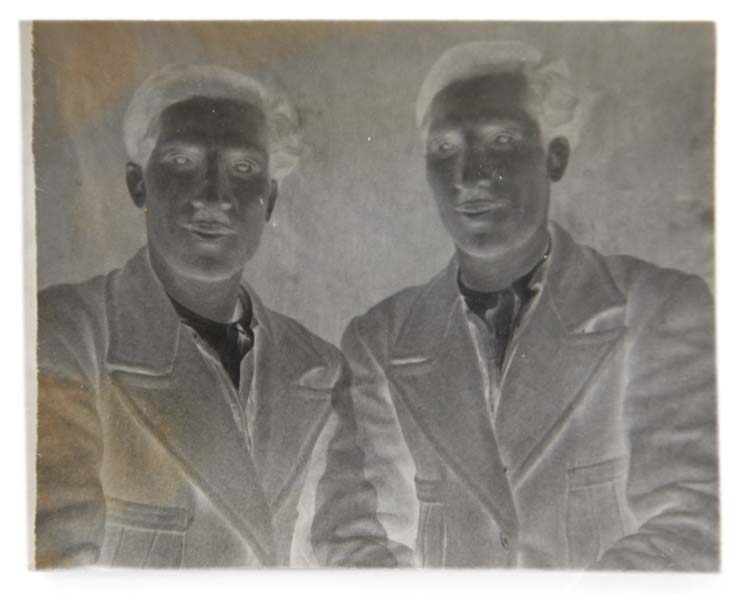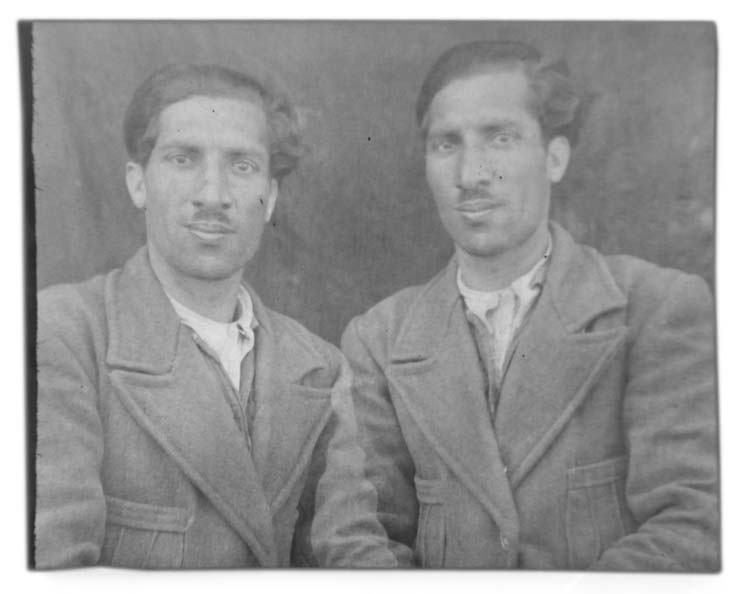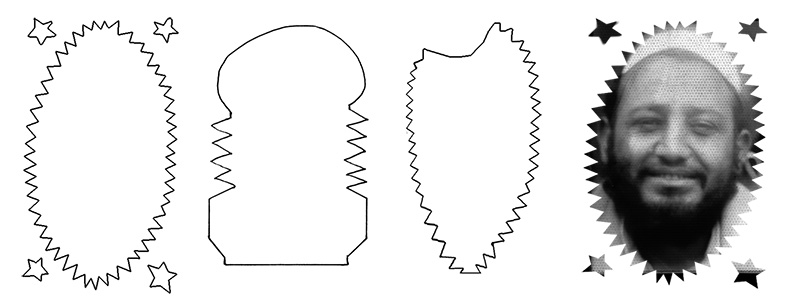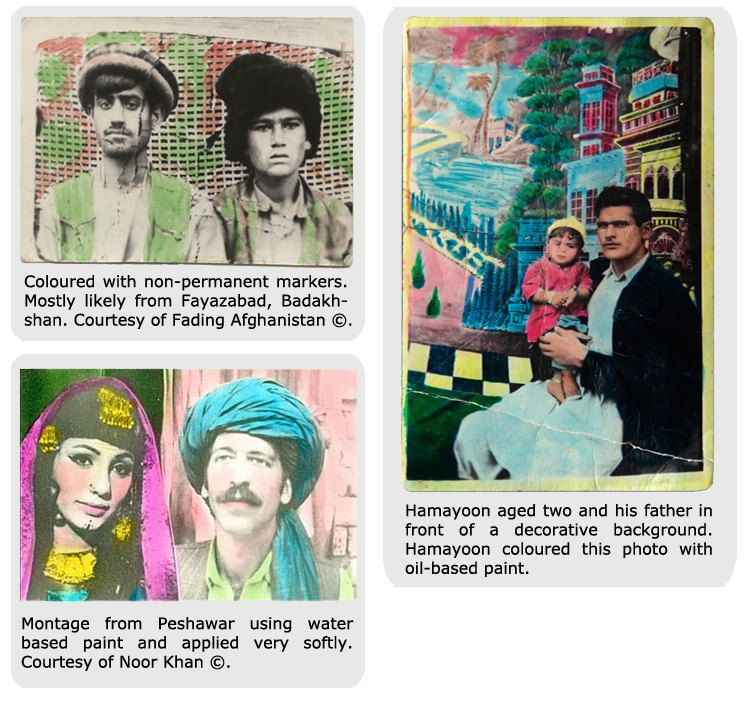|
|
|
TECHNIQUES
COPYING / DOUBLE EXPOSURE / MONTAGE / CUT-OUT / TINTING / PARTIAL EXPOSURE / COLOURING / SCRATCHING / ............. MULTIPLES / CONTACT PRINTING COPYING Customers have copies of photographs made with a kamra-e-faoree because it is cheaper than the digital alternative. The first time we observed this was when the man standing on the left in the shot below brought a photo of a female relative along to be copied by Rohullah. What follows is a reconstruction of that scene with an alternative model.
DOUBLE EXPOSURE Double exposures with a kamra-e-faoree are made in the same way as double exposures with a regular analogue SLR camera. The negative, or in this case the photographic paper, will be exposed twice to light. To make this double portrait of Abdul Samad, the father of Abdul Satar, he was positioned once on the left side of the frame and once on the right side. The shutter (lens cap for a kamra-e- faoree) will be opened twice for the same amount of time.
MONTAGE A montage (or photomontage) is the outcome of cutting and joining two or more photographs together. In this case it is the composition of two negatives that are pasted on top of each other and photographed afterwards. The result is a seamless photographic print. This photo was taken by Abdul Samad, the father of Abdul Satar.
This frame montage by Muhammad Ishaq is composed of a cut out negative portrait and a cut out frame image. The negatives are placed on top of each other then photographed to create the final positive image. .
CUT-OUT Photographers from Kabul to Kandahar and Peshawar to Lahore have creatively cut out negatives in different shapes and photographed them to get interesting positive results. These photographs were also displayed in the box camera display frames. The technique could have been achieved in several ways, for example with the use of a stencil that was placed on top of the negative while taking the positive image.
TINTING Occasionally negative images need balancing out to achieve an even contrast, so photographers apply a red tint to the negative before shooting the positive. This film was shot with Qalam Nabi.
PARTIAL EXPOSURE In this short video Rohullah applies a technique commonly called 'dodging and burning'. He exposes the background of the photo he is making to more light than the face. By doing so he creates contrast between the background and the face on the photograph. All he needed for this was a small piece of paper.
COLOURING Using water and oil-based paints, marker pens and dampened kite-paper, photographers could paint over photographs for decorative effect. In the film below Mirwais Hakeemy demonstrates the technique of colouring a box camera photograph with kite-paper on a group photograph taken by Mirzaman.
SCRATCHING In order to add depth to the positive image the photographer scratched thin lines on the negatives surface, giving the weakly contrasted turban of the customer enhanced definition. ..............................................
MULTIPLES Making multiple positives from negatives at the same was a widespread technique photographers employed when they had large groups of customers to photograph. In the video below Mirzaman illustrates a six-negative-to-positive technique in the video below.
CONTACT PRINTING Several photographers we met used the box camera to contact-print film negatives. This way they could make use of the pre-mixed chemicals inside the camera and create a positive from a negative in a very short time.
.................................................................................... |
||









